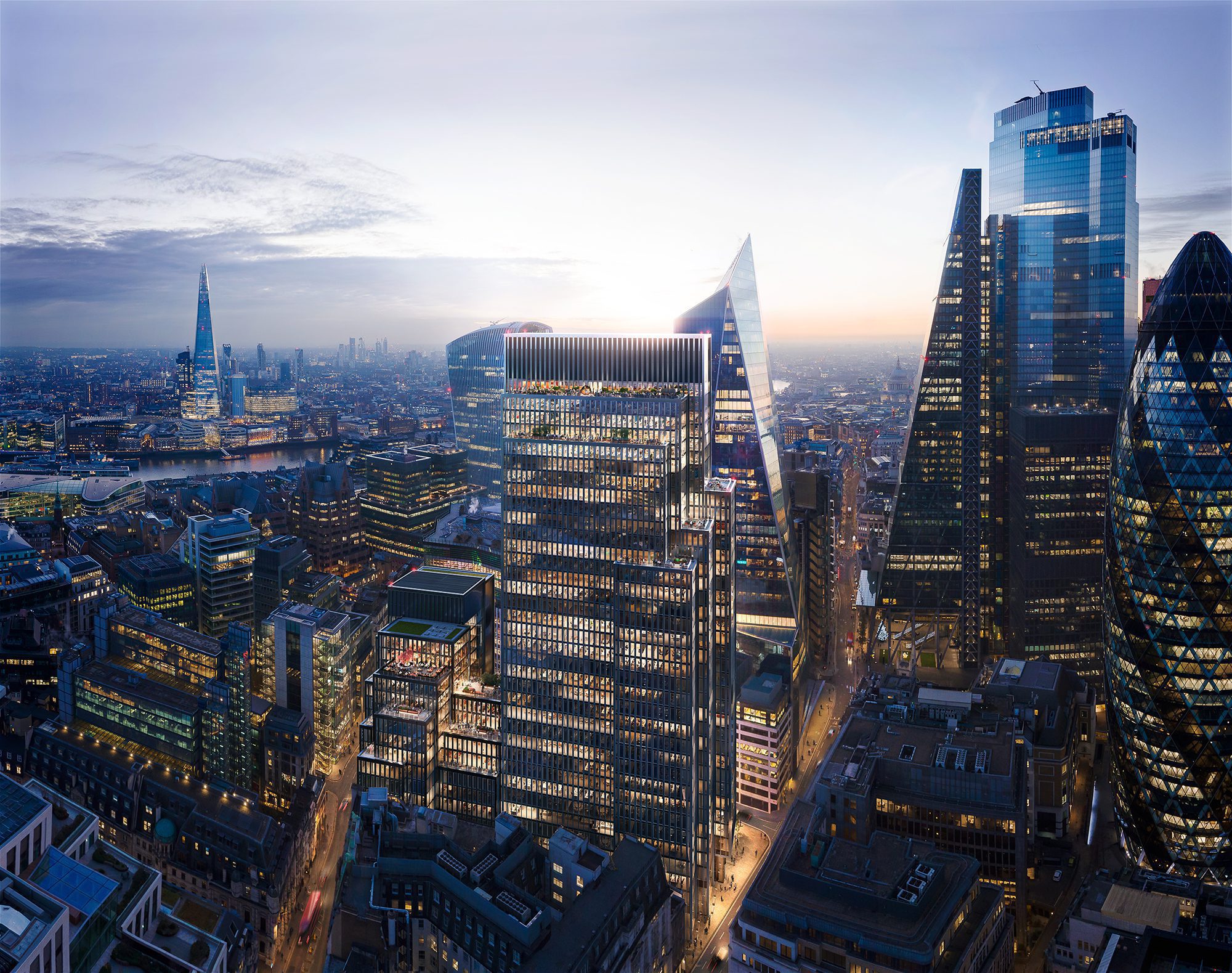If we’re to confront the climate crisis, real estate must get smart
Posted:
5 / 13 / 2021
Tagged:

Sustainability isn’t a trend, it’s a necessity. No longer the fleeting fancy of an eco-conscious minority, 63% of office workers consider working in an environmentally sustainable office very important, so any employer looking to attract top talent must have sustainability as a core consideration, making it a fundamental concern for every landlord and developer.
Climate change sits at the very front of the agenda for governments, corporations and individuals, and the solution lies not in local efforts, but a worldwide push. For sustainability efforts to have impact, cross-border cooperation is essential. Commercial Real Estate is awash with companies that operate on a global scale – presenting an opportune moment for the industry to lead by example and generate meaningful change.
Smart technology and enhanced green credentials go hand in hand. If we’re to collectively meet our global carbon reduction targets, the real estate industry needs to play its part, and smart buildings are critical in creating a greener future. It’s time to strike whilst the iron’s hot, and before the world gets even hotter.
Law and legislation:
The Paris Agreement of 2016 saw a legally binding international treaty on climate change adopted by 196 Parties at COP 21. All countries involved agreed to limit the global temperature increase to below 2°C /35.6°F (compared to pre-industrial levels). But we must do more. If governments follow through with current policies as agreed at COP21, we will see the global mean temperature increase by 2.7°C/36.86°F by 2100 – an increase the world can’t afford.
In addition to the implementation of international law that necessitates smarter, greener buildings, local laws regarding building emissions have come into play. The recent law in New York City decrees that buildings larger than 25,000 sq ft must cut carbon emissions by 40% by 2030, rising to 80% by 2050, or face a fine of $286 per excess metric tonne. Canada’s supreme court also voted in favour of a national carbon tax. The tax plan has been the central driving force in Prime Minister Justin Trudeau’s goal of achieving net-zero by 2050.
The case for a greener, smarter future doesn’t just make ethical sense, it’s a financial and legal imperative. As carbon emission taxation becomes the norm, developers simply won’t be able to afford to build without a sound sustainability strategy – shining a spotlight on smart building technology like never before.
What can real estate do?
The built environment and its associated emissions contribute to nearly 40% of all global carbon emissions. This means that the Real Estate industry is a significant part of the problem – but also means that it has an opportunity to play a meaningful part in finding a solution to this global issue.
Up to 90% of our time is spent indoors, therefore improving in-use building performance is critical. A lot can be achieved with the materials and processes in developments, but to truly minimize the whole-life carbon impact of real estate, landlords need to optimize operations (which account for 75% of the carbon emissions emitted by buildings).
Reducing a building’s carbon footprint can involve steps as basic as swapping to low energy lightbulbs, or having a proper recycling system set up throughout a building. “In real estate and climate tech, there is a lot of stuff that is boring but moves the needle for the world in a very significant way” – Greg Smithies, Fifth Wall partner and co-leader of the climate technology investment team.
Analogue changes (like understanding ventilation models, heating, lighting and the existing operations) and analyzing the data you’re getting from the systems you currently have to optimize building performance, will vastly improve the sustainability of a building. What’s more, this kind of data is great to share with tenants, and can be used as a means to incentivize sustainability initiatives.
But, to achieve a fully sustainable built environment, smart technology is essential. Analogue changes can take us so far, but smart is needed to optimize and automate the building’s performance, making it cost efficient, fully sustainable, future-proof and able to deliver an exceptional user experience.
Replacing antiquated heating and lighting systems with a smart system will provide insight on building use, exposing opportunities for better-optimization via building performance reports. Smart technology will also enable real-time optimization, via multiple linked datasets and machine learning that understands the behaviour of the building occupants and responds immediately without human intervention.
User experience can be incorporated as part of a successful sustainability strategy. 70% of people see climate change as a major threat, therefore tenants will likely be enthusiastic about being a part of positive change, giving the landlord a mandate for driving change, and involving their tenants in their push towards more sustainable space. Initiatives could include:
- Supporting tenants to identify low occupancy days (for example desks are at <50% occupancy on Fridays), and assisting in consolidating teams and closing down unused space real-time to reduce energy usage.
- A recycling initiative that establishes some lighthearted competition between floors/tenants of the building to increase engagement.
- Limit water waste by measuring actual usage tenant by tenant and sharing the data back to the tenant representatives.
- Encourage activities which reduce energy costs and improve wellbeing outcomes, such as using the stairs instead of the lift.
Looking to the buildings of tomorrow, making all new developments as smart and adaptable as possible will future proof assets, ensuring that in the future, buildings can be updated as you go, rather than being built brand new.
Setting the sustainable standard:
Using smart technology to achieve exemplary levels of sustainability is essential for 40 Leadenhall in the City of London, whereby Environmental, Social and Governance (ESG) criteria have been central considerations throughout the decision making of M&G and Nuveen Real Estate in the delivery of the project. The building itself delivers 900,000 sq ft of commercial office, amenities and retail space and needs to achieve this in the most sustainable means possible.
To enable exemplary sustainable performance, providing complex and thorough analytics is a key criteria in the identification and procurement of a Smart Platform that will be used by the Building & Facilities Management team to manage and control the building systems. Coupled with occupancy and environmental sensors to supplement the BMS, and the ability to link to a Digital Twin of the building, smart technologies will mean that 40 Leadenhall will be an exemplar project in terms of sustainability.

40 Leadenhall, City of London
Using smart technology to achieve exemplary levels of sustainability is essential for 40 Leadenhall in the City of London, whereby Environmental, Social and Governance (ESG) criteria have been central considerations throughout the decision making of M&G and Nuveen Real Estate in the delivery of the project. The building itself delivers 900,000 sq ft of commercial office, amenities and retail space and needs to achieve this in the most sustainable means possible.
To enable exemplary sustainable performance, providing complex and thorough analytics is a key criteria in the identification and procurement of a Smart Platform that will be used by the Building & Facilities Management team to manage and control the building systems. Coupled with occupancy and environmental sensors to supplement the BMS, and the ability to link to a Digital Twin of the building, smart technologies will mean that 40 Leadenhall will be an exemplar project in terms of sustainability.
Final thoughts:
We live within a world so finely tuned to the concept of impact (corporate, social and environmental), that for any space it’s of utmost importance that sustainability is considered. Environmental Social Governance (ESG) policies frequently incorporate carbon reduction or offsetting targets, making net-zero an industry necessity.
As Sabine Desnault, Gecina Executive Director R&D, points out: “We are seeing a trend in tenant demand for buildings that meet the highest standards in terms of sustainability, productivity, with a high level of experience combined with a high quality service offering.” So, if developers are to keep pace with tenant demand, sustainability – and by extension smart building technology – is key.